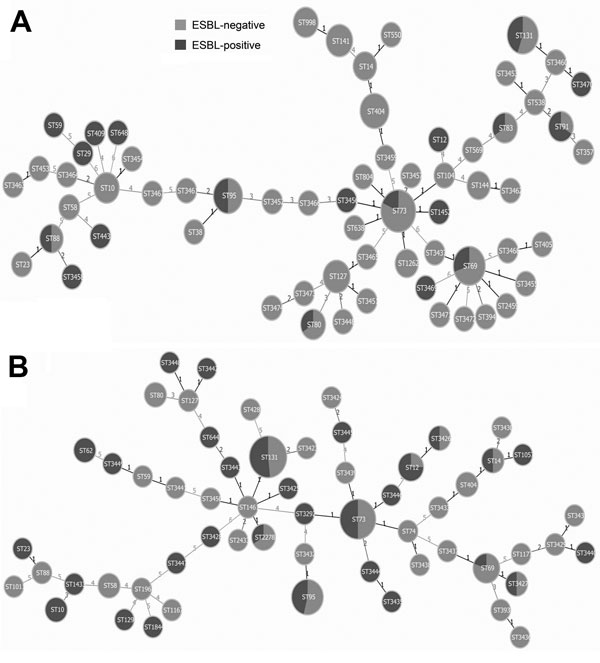Volume 19, Number 10—October 2013
Letter
Multidrug-Resistant Escherichia coli Bacteremia
Figure

Figure. . . Minimum-spanning trees showing carriage of extended-spectrum β-lactamases (ESBL) in Escherichia coli isolates from urine samples (A) and samples from patients with bacteremia (B). Each circle represents 1 sequence type (ST), and the size of the circle reflects the number of isolates belonging to this particular ST within the bacteria group. Lines between the circles represent how different their allelic profiles are; a line labeled 1 means the linked STs differ in >1 of the 7 alleles, which is named a single locus variant (SLV). A cluster of STs linked by SLVs is a clonal complex. Nineteen (30.16%) of 63 STs found among the urine isolates were ESBL positive, in comparison to 30 (51.72%) of 58 for the bacteremia isolates.
Page created: August 14, 2013
Page updated: September 16, 2013
Page reviewed: September 16, 2013
The conclusions, findings, and opinions expressed by authors contributing to this journal do not necessarily reflect the official position of the U.S. Department of Health and Human Services, the Public Health Service, the Centers for Disease Control and Prevention, or the authors' affiliated institutions. Use of trade names is for identification only and does not imply endorsement by any of the groups named above.